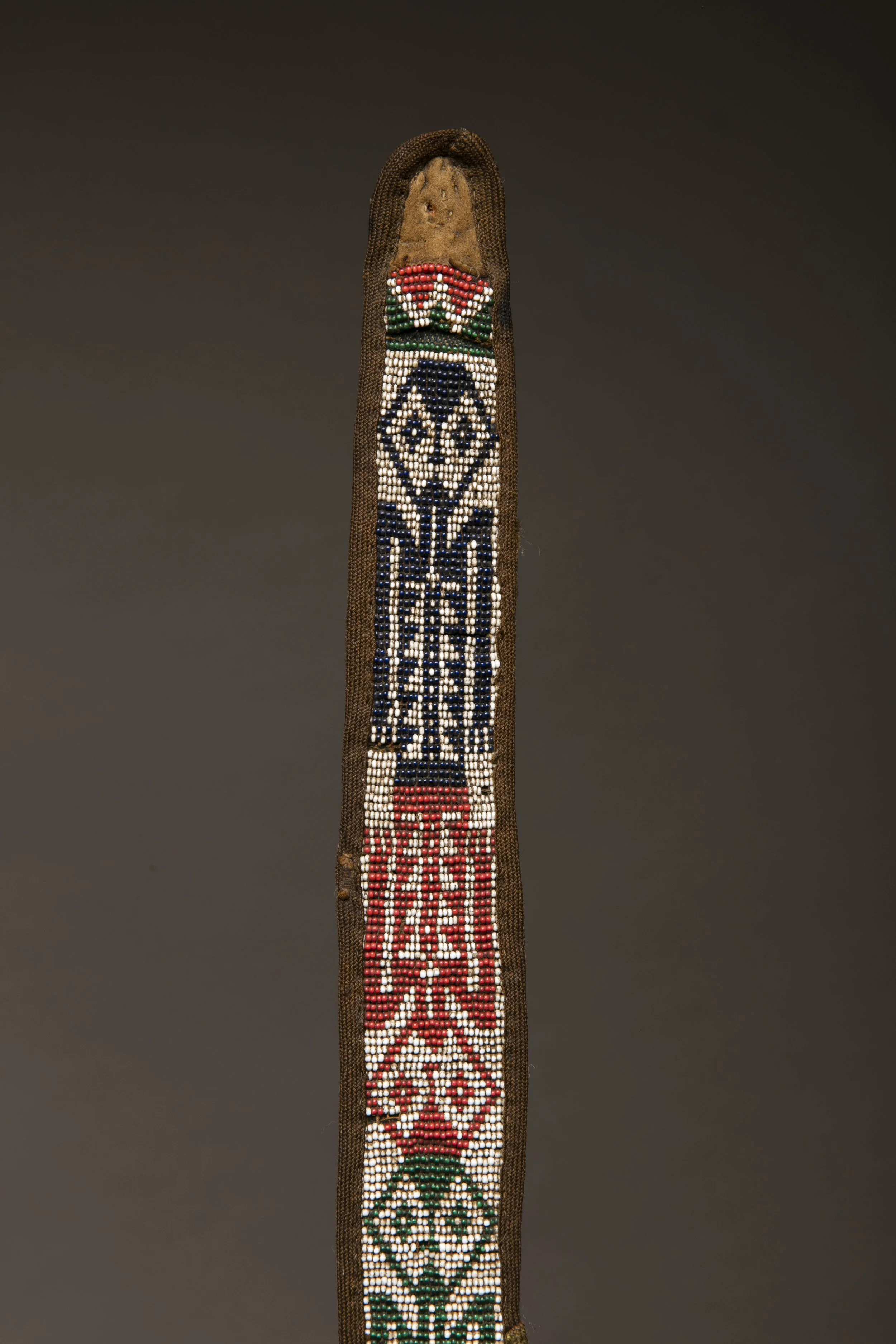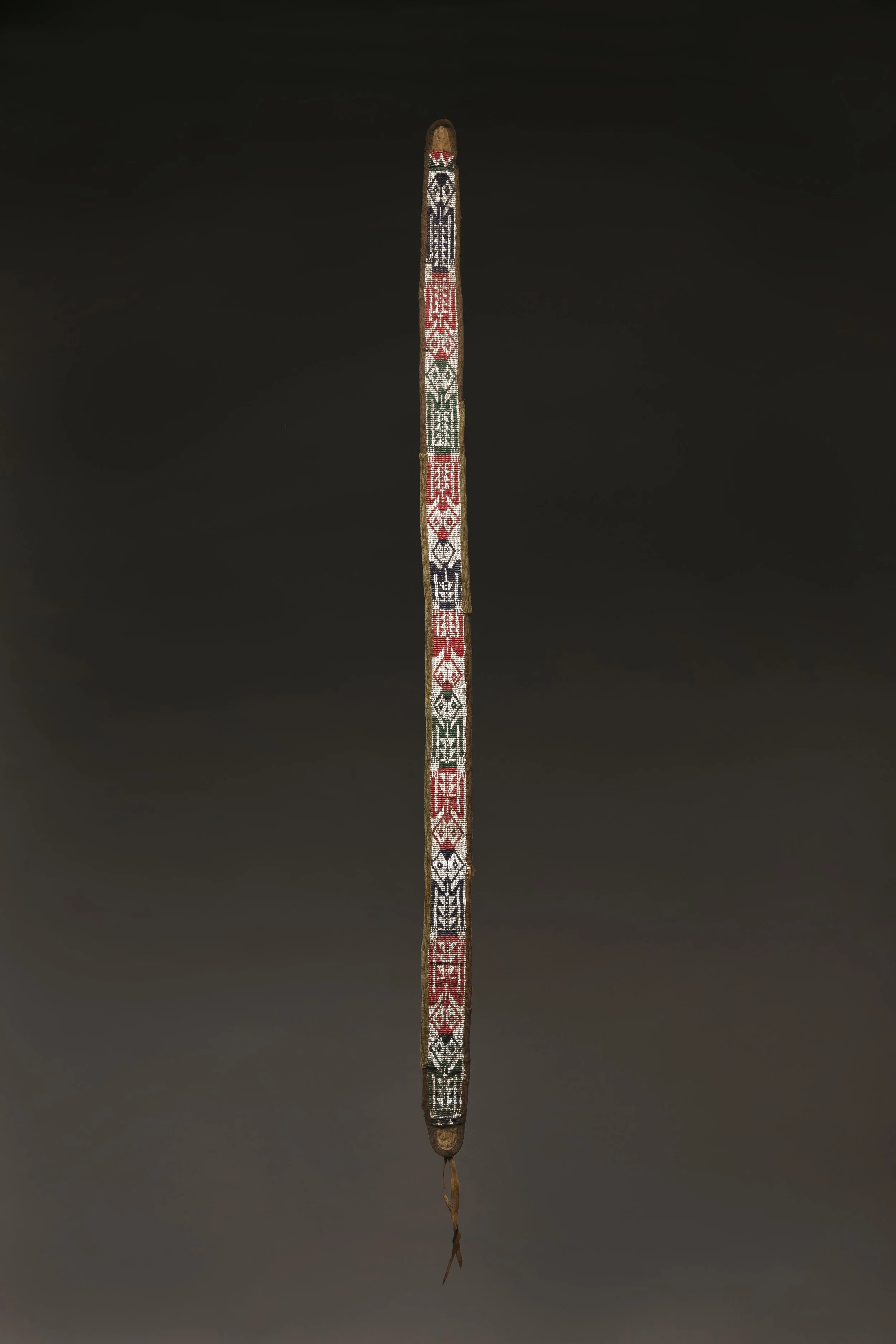Wasco-Wishram Strap, 1850-1875 / Ex Robert Pamplin Jr, OR / Published
Surviving Wasco-Wishram material from the mid-19th century is exceedingly rare. A strap such as this would have been fastened to a bandolier bag. An example of an intact bag and strap can be found in the Splendid Heritage collection.
The strap featured here is decorated with seed beads, arranged in a loom beaded pattern, depicting interlocking stylized skeletal beings, also known as “ancestral figures.” These figures played a central role in the artistic traditions of the Columbia River.
Artists of the region had depicted these figures on rock walls, baskets and utilitarian objects for centuries. The arrival of European glass beads in the 19th century, however, provided female artists with a new medium through which they could recreate these traditional designs onto pouches. Decades later, these transferred motifs played a critical role in inspiring the artwork of the Underwood family, who used these ancient designs in commercial works.
Approximately 40” long
Ex Jack Curtwright, WA; ex Dr. Robert Pamplin Jr, OR.
Published: Mary Schlick and Bonnie Kahn, Keeping the Spirit Alive: American Indian Art from the Dr. and Mrs. Robert B. Pamplin Jr. Collection (Portland, OR: Oregon Historical Society Press, 2001), p. 49.
#51127


